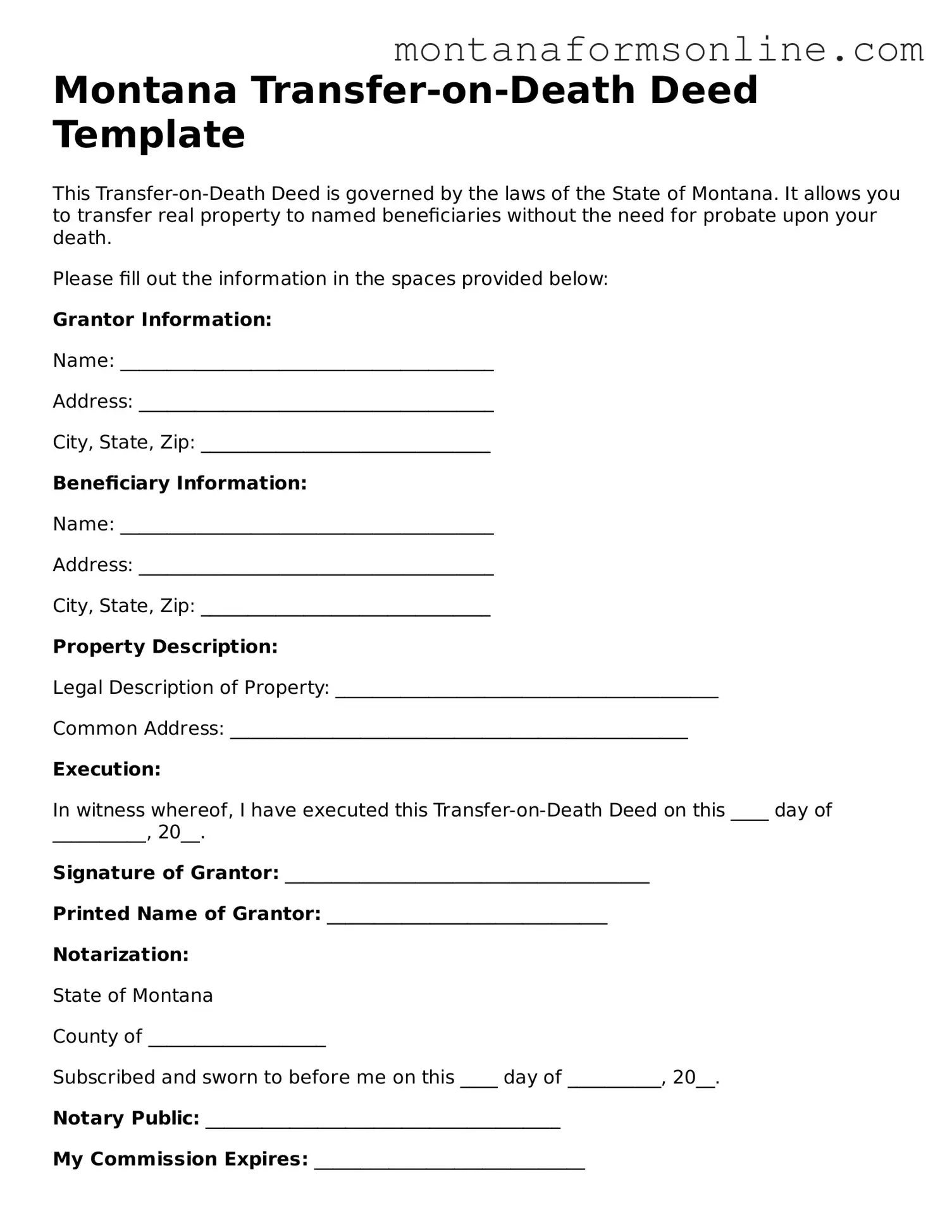The Montana Transfer-on-Death Deed (TODD) form shares similarities with the revocable living trust. Both documents allow individuals to transfer property outside of probate. A revocable living trust enables the property owner to maintain control over their assets during their lifetime. Upon their death, the assets in the trust are distributed according to the terms set forth in the trust document, avoiding the lengthy probate process. This similarity makes both options appealing for those looking to streamline the transfer of assets after death.
Another document akin to the TODD is the beneficiary deed. Like the TODD, a beneficiary deed allows property owners to designate a beneficiary who will receive the property upon their death. This deed also bypasses probate, ensuring a smoother transition of ownership. The key difference lies in the fact that a beneficiary deed must be recorded with the county clerk, while a TODD is executed as part of the property owner's estate planning.
The last will and testament is another document that bears resemblance to the TODD. A will outlines how a person's assets should be distributed after their death. However, unlike the TODD, a will typically requires probate to be validated. While both documents serve the purpose of asset distribution, the TODD offers a more direct and efficient method by allowing property transfer without court involvement.
The durable power of attorney is similar in that it allows individuals to designate someone to manage their affairs. While the power of attorney is effective during the individual’s lifetime, it ceases upon their death. In contrast, the TODD specifically addresses property transfer after death, making it a distinct yet related tool for estate planning.
Joint tenancy with right of survivorship is another relevant document. This arrangement allows two or more individuals to own property together, with the surviving owner(s) automatically inheriting the deceased owner's share. Like the TODD, this form of ownership avoids probate. However, it requires the joint owners to agree on the ownership structure and can lead to complications if one owner wishes to sell their share.
The living will, while primarily focused on healthcare decisions, shares the intent of specifying wishes for the future. A living will outlines an individual's preferences regarding medical treatment in the event they become incapacitated. While not directly related to property transfer, both the living will and the TODD reflect proactive planning for future circumstances.
The family limited partnership (FLP) is another estate planning tool that can resemble the TODD. An FLP allows family members to pool resources and manage assets collectively. Upon the death of a partner, their share can be transferred to beneficiaries without going through probate. This shared management aspect is similar to the TODD's intent to simplify the transfer of property after death.
The life estate deed is similar in that it allows individuals to transfer property while retaining the right to live in it during their lifetime. Upon death, the property automatically transfers to the designated beneficiaries. This arrangement mirrors the TODD’s goal of facilitating a smooth transition of property ownership without probate, although it involves different legal considerations regarding ownership rights.
The IRS 2553 form is a critical document used by small businesses to elect S corporation status for tax purposes. This form allows eligible corporations or entities to be taxed as pass-through entities, potentially leading to tax savings. Understanding and correctly filing Form 2553 is essential for businesses seeking to benefit from S corporation status. For more guidance on completing this form, resources such as smarttemplates.net can be invaluable.
The irrevocable trust is another document that can be compared to the TODD. Once established, an irrevocable trust cannot be altered or revoked by the grantor. Assets placed in this trust are removed from the grantor’s estate, thus avoiding probate. While both the irrevocable trust and the TODD aim to simplify asset transfer, the irrevocable trust offers additional benefits, such as potential tax advantages.
Finally, the assignment of property is similar to the TODD in its function of transferring ownership. An assignment allows a property owner to transfer their rights to another party. This document can be executed during the owner’s lifetime, and while it may not address post-death transfers specifically, it serves as a means to convey property rights, akin to the TODD’s purpose of facilitating property transfer after death.
